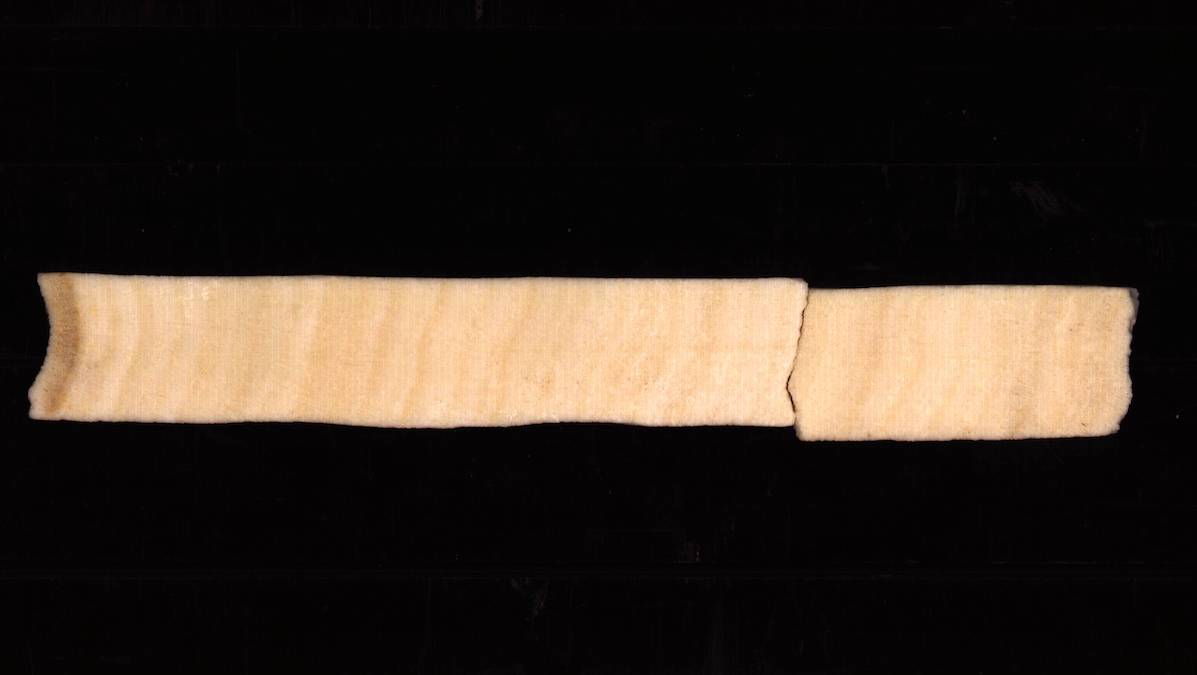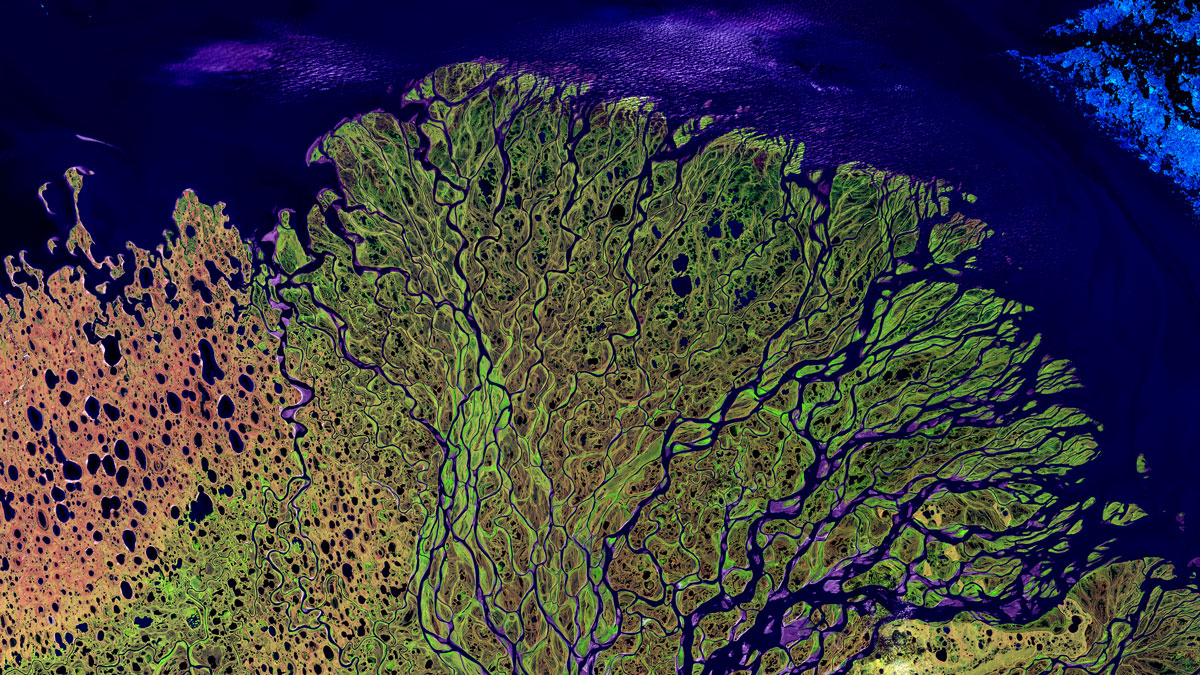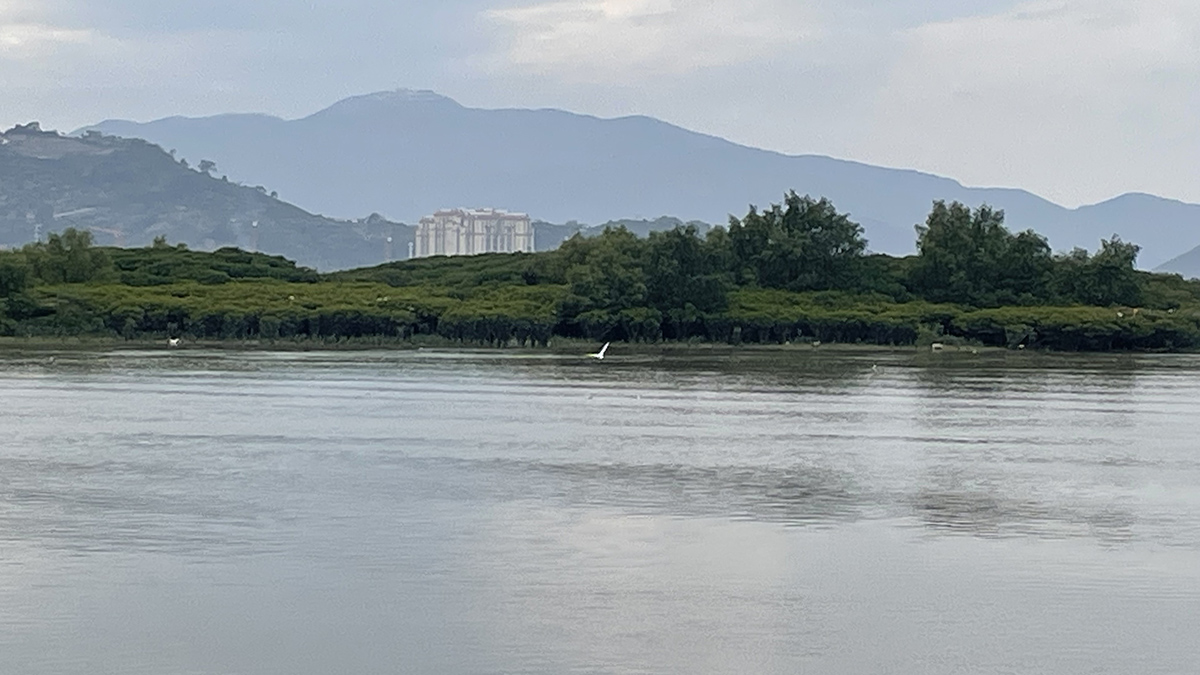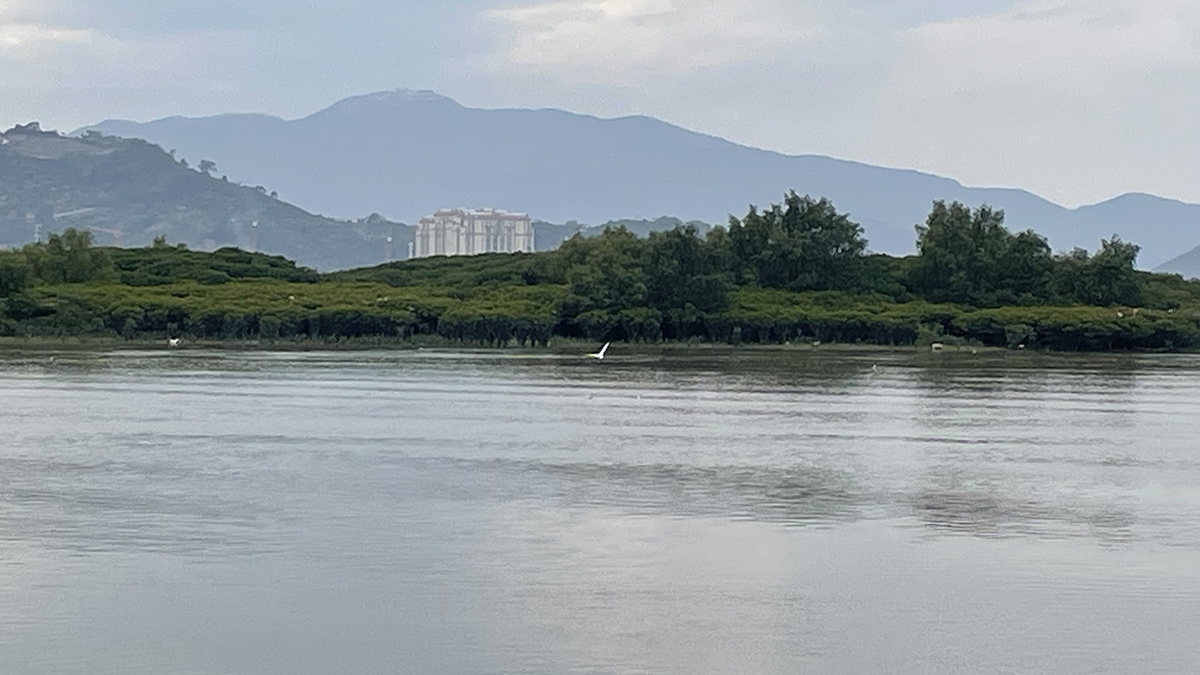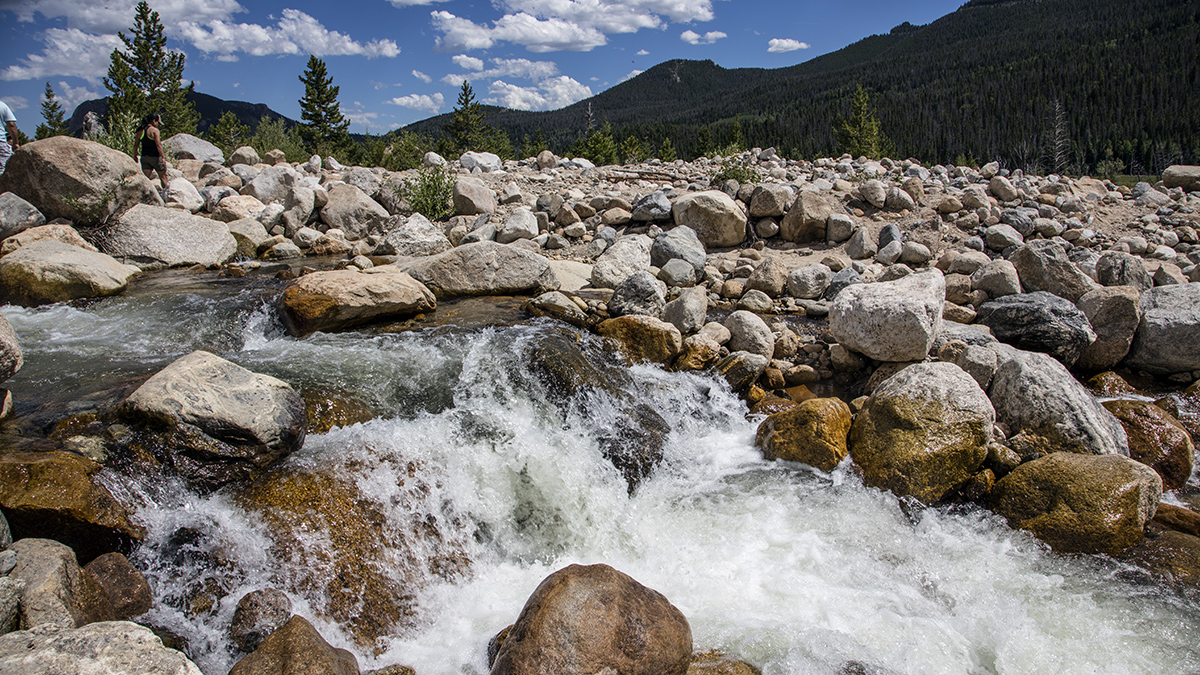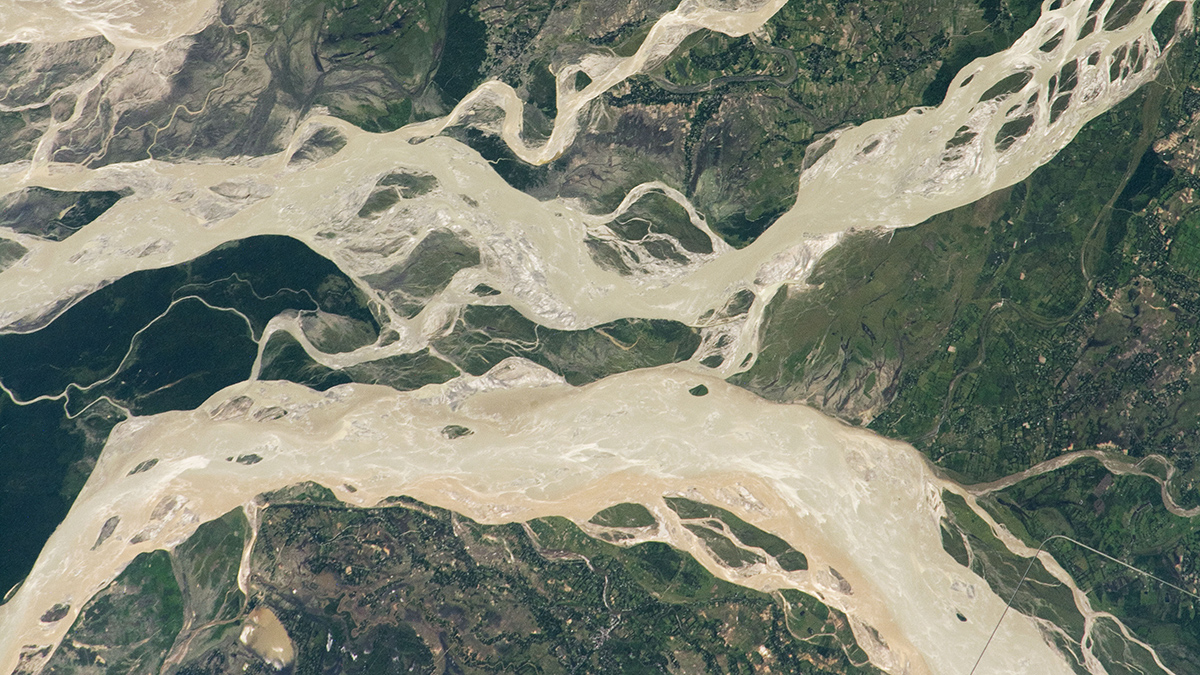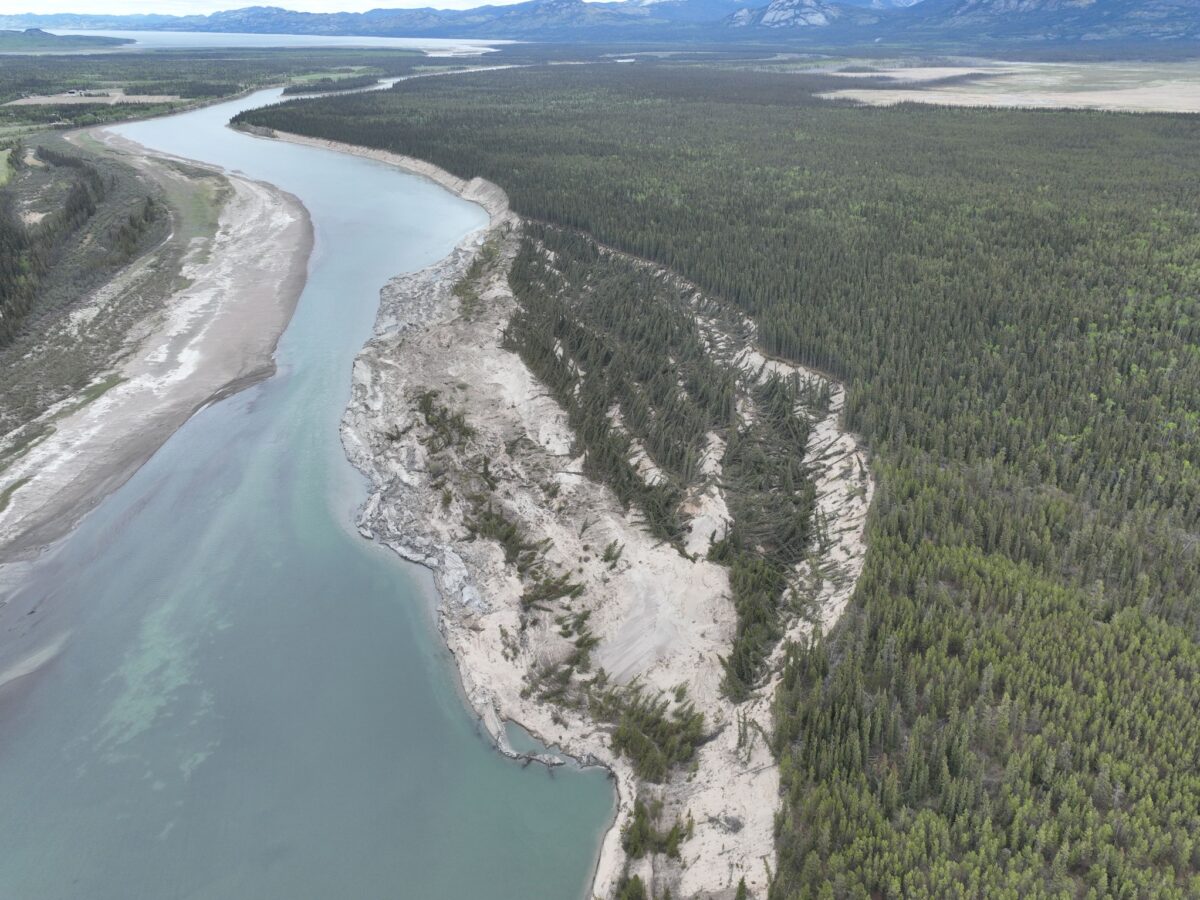Trace elements in coral reefs provide a timeline of how Borneo’s rainforests have been altered by industry.
rivers
Arctic Rivers Trade Inorganic Nitrogen for Organic
Climate change is shifting the makeup of a key nutrient in rivers across Russia, Alaska, and Canada, with the potential for ecosystem-wide impacts.
Tracing Black Carbon’s Journey to the Ocean
Scientists surveyed a trio of estuaries in pursuit of a missing source of oceanic dissolved black carbon.
Years-Old Groundwater Dominates Spring Mountain Streams
Alpine rain and snow take much longer to percolate into western U.S. streams than previously thought, adding complexity to long-standing hydrologic models.
Coherent, Not Chaotic, Migration in the Brahmaputra-Jamuna River
The channel threads in braided river systems may be more predictable than previously thought.
Obtaining Local Streamflow at Any Resolution
A new upscaling method ensures that global simulations at low resolution preserve the streamflow at local points of interest, such as stream gauges.
Images of the May 2025 Yukon River landslide
Derek Cronmiller of the Yukon Geological Survey has provided a stunning set of the images of the fascinating recent failure that partially blocked the Yukon River. Following my post yesterday about the May 2025 landslide on the Yukon River, Derek Cronmiller, who is head of Surficial Geology at the Yukon Geological Survey kindly made contact […]
A large landslide on the Yukon River in Canada
In May 2025, a 950 m wide landslide occurred on the banks of the Yukon River in Canada. A few days ago, the Yukon Geological Survey posted some information to its Facebook site regarding a large landslide that has occurred on the banks of the Yukon River close to Burma Road. This was the information […]
Tracking the Sediment Carried by the Muddy Mississippi
New research shows that typically, less than 10% of land-building alluvium reaches the Bird’s Foot Delta region, the southernmost reach of the river, where it meets the Gulf.

